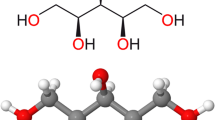Abstract
The aim of this study was to evaluate the effect of a new prophylactic gel on plaque pH and plaque fluoride concentration. Twelve participants with normal (n=6, ≥0.7 ml/min) and low (n=6, <0.7 ml/min) stimulated whole salivary secretion rate were included. After 3 days of plaque accumulation, at random the participants were (1) treated with Profylin fluoride gel with buffering components (active gel), (2) treated with Profylin fluoride gel without buffering components (placebo gel), (3) asked to rinse with water, and (4) given no treatment. All test series were followed by rinsing with a nutrition solution; after which registration of plaque pH was performed during 60 min. There were two drop outs with low salivary secretion rate in the water session. The overall least pronounced pH fall was found after the use of the prophylactic gel. Significant differences between the prophylactic gel and the placebo gel were found for the participants with normal secretion rate. Fluoride plaque concentrations evaluated in 12 individuals after (1) application of the active gel, (2) rinsing with 0.2% NaF, and (3) rinsing with water showed significantly higher values after rinsing with the NaF solution. It can be concluded that application of the active gel, particularly in subjects with normal salivary secretion rate, in general, buffered plaque pH to higher levels. Factors like concentration of buffering agent and solubility of the gel need to be further evaluated to improve the effect.


Similar content being viewed by others
References
Bardow A, Moe D, Nyvad B, Madsen J, Nauntofte B (2000) The buffer capacity and buffer systems of human whole saliva measured without loss of CO2. Oral Biol 45:1–12
Blake-Haskins JC, Gaffar A, Volpe AR, Bánóczy J, Gintner Z, Dombi C (1997) The effect of bicarbonate/fluoride dentifrices on human plaque pH. J Clin Dent 8:173–177
ten Cate JM, Larsen MJ, Pearce EIF, Fejerskov O (2003) Chemical interactions between the tooth and oral fluids. In: Fejerskov O, Kidd E (eds) Dental caries—the disease and its clinical management. Munksgaard, Copenhagen, Denmark, pp 55–69
Dawes C (1997) Effect of a bicarbonate-containing dentifrice on pH changes in a gel stabilized plaque after exposure to sucrose. Compend Contin Educ Dent Suppl 18:8–10
Ekstrand J, Oliveby A (1999) Fluoride in the oral environment. Acta Odontol Scand 57:330–333
Ericsson Y, Hardwick L (1978) Individual diagnosis, prognosis and councelling for caries prevention. Caries Res 12:94–102
Fure S (2004) Ten year cross-sectional and incidence study of coronal and root caries and some related factors in elderly Swedish individuals. Gerodontology 21:130–140
Fure S, Zickert I (1997) Incidence of tooth loss and dental caries in 60-, 70- and 80-year-old Swedish individuals. Community Dent Oral Epidemiol 25:137–142
Hamilton IR (1990) Biochemical effects of fluoride on oral bacteria. J Dent Res 69:660–667
Hugoson A, Koch G, Göthberg C, Nydell Helkimo A, Lundin S-Å, Norderyd O, Sjödin B, Sondell K (2005) Oral health of individuals aged 3–80 years in Jönköping, Sweden during 30 years (1973–2003). II. Review of clinical and radiographic findings. Swed Dent J 29:139–155
Igarashi K, Lee IK, Schachtele CF (1988) Effect of chewing gum containing sodium bicarbonate on human interproximal plaque pH. J Dent Res 67:531–535
Imfeld TN (1983) Evaluation of the method. In: Imfeld TN (ed) Identification of low caries risk dietary components. Karger, Basel, Switzerland, pp 61–63
Lingström P, Imfeld T, Birkhed D (1993) Comparison of three different methods for measurement of plaque-pH in humans after consumption of soft bread and potato chips. J Dent Res 72:865–870
van Loveren C (1990) The antimicrobial action of fluoride and its role in caries inhibition. J Dent Res 69:676–681
Mandel ID (1987) The functions of saliva. J Dent Res 66:623–627
Meyerowitz C, Featherstone J, Billings R, Eisenberg A, Fu J, Shariati M (1991) Use of an intra-oral model to evaluate 0.05% sodium fluoride mouthrinse in radiation-induced hyposalivation. J Dent Res 70:894–898
Morse DE, Holm-Pedersen P, Holm-Pedersen J, Katz RV, Viitanen M, von Strauss E, Winblad B (2002) Dental caries in persons over the age of 80 living in Kungsholmen, Sweden: findings from the KEOHS project. Community Dent Health 19:262–267
Neff D (1967) Acid production from different carbohydrate sources in human plaque in situ. Caries Res 1:78–87
Nilner K, Nikolaos V, Birkhed D (1991) Effect of a buffering sugar-free lozenge on intraoral pH and electrochemical action. Acta Odontol Scand 49:267–272
Persson A, Lingström P, Bäcklund T, van Dijken JWV (2004) Evaluation of a skin reference electrode used for intraoral pH measurements in combination with a microtouch electrode. Clin Oral Investig 8:172–175
Scheie AA, Luan WM, Dahlén, G, Fejerskov O (1996) Plaque pH and microflora of dental plaque on sound and carious root surfaces. J Dent Res 75:1901–1908
Sjögren K, Birkhed D, Rangmar S, Reinhold AC (1996) Fluoride in the interdental area after two different post-brushing water-rinsing procedures. Caries Res 3:194–199
Tanzer JM, McMahon T, Grant L (1990) Bicarbonate-based powder and paste dentifrice effects on caries. Clin Prev Dent 12:18–21
Acknowledgements
This study was supported by grants of The Swedish Patent Revenue Fund for Research in Preventive Dentistry and Colgate Palmolive A/S. We thank Prophylactor AB, Stockholm, Sweden for contributing the gels and Arla Foods, Stockholm, Sweden for the nutrition solution.
Author information
Authors and Affiliations
Corresponding author
Rights and permissions
About this article
Cite this article
Persson, A., Lingström, P., Bergdahl, M. et al. Buffering effect of a prophylactic gel on dental plaque. Clin Oral Invest 10, 289–295 (2006). https://doi.org/10.1007/s00784-006-0060-5
Received:
Accepted:
Published:
Issue Date:
DOI: https://doi.org/10.1007/s00784-006-0060-5



